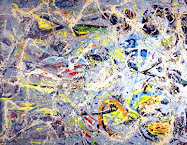I'm proud to describe myself as mostly self-taught. My only formal art schooling was the unusual program founded by Norman Rockwell and his peers: the Famous Artists School for Talented Young People. It was a matchbook correspondence course, but I noticed, to my lifelong delight, that the courses placed a high premium on the finer qualities of art, both contemporaneous and historical. I recall that the first leafed picture in my big binder was a landscape by Vincent van Gogh.
I don’t see things the way modernists do, even though I enjoy studying their work.
Rockwell agonized over his painting; he probably lost money on it, but he was the only one who did. - David Apatoff.
Can illustrative art rise to the heights of the numinous descriptor "fine art?" What about representational work, which has also been denigrated as too pedestrian for upper-strata tastes? The best commentary I've read is by blogger David Apatoff. You will find some depth to this story at Apartoff's blog; do have a look. This sale is indeed a newsworthy event, and it is a thumb in the eye of Rockwell's host of detractors over the years.
When will we ever learn? The subjective parts of painting are important, but should they consume our every critical thought about a painting? Even a formalist can appreciate, and indeed love, the form of Norman Rockwell's brilliant work. His keenly observed art rises to the fine, and challenges the boilerplate of how art "must" be done.
WARRING WITH TROLLS, part 5.
Illustration Art, by David Apatoff.
About the Famous Artists School Founders.








































